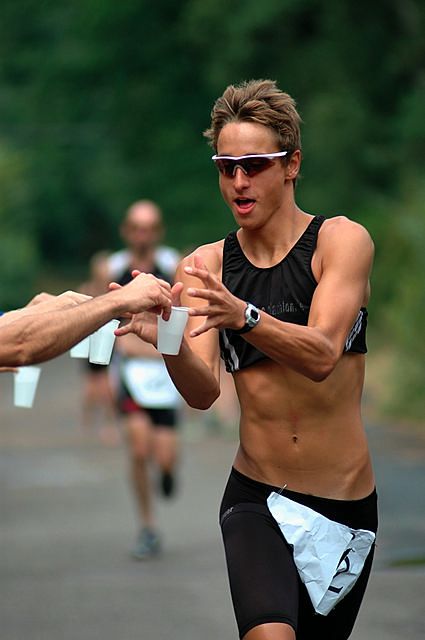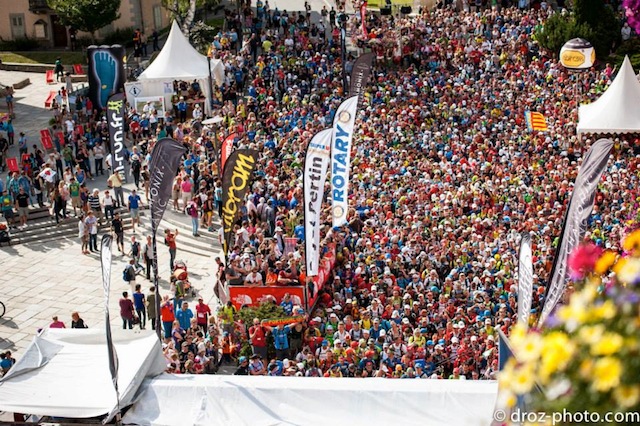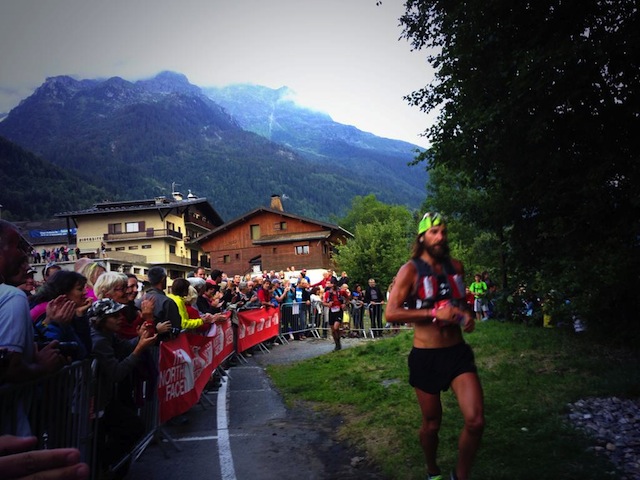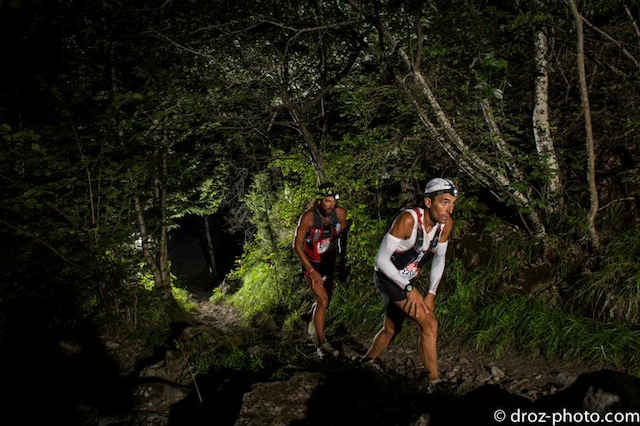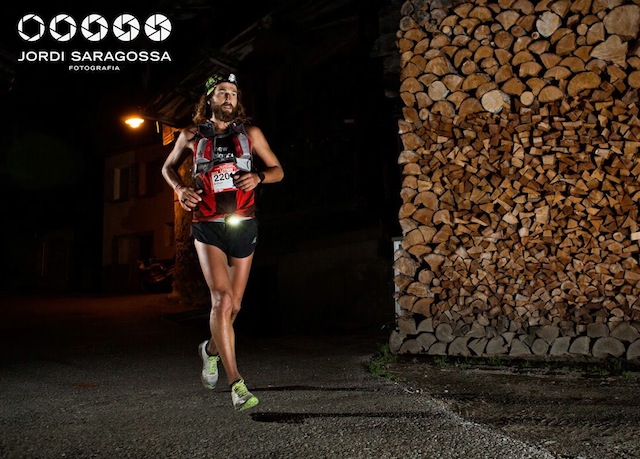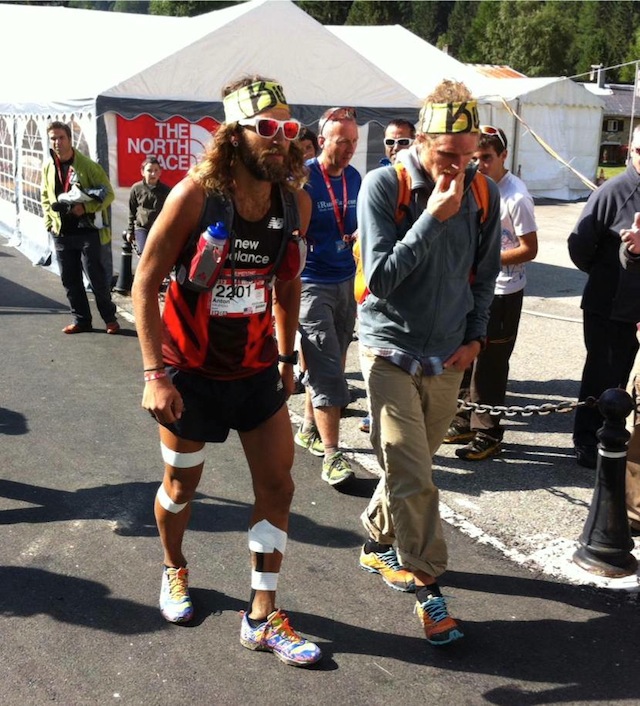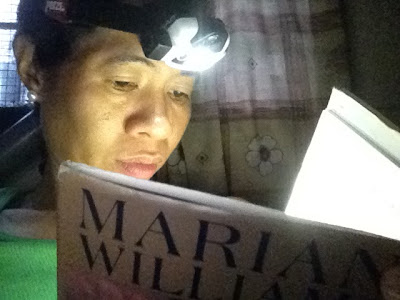It was not the electricity black out nor the wind and heavy downpour of rain or the mud pits can almost stop me from finishing this race, it was my close encounter with 5 village dogs. Miraculously I got out of it with only minor rip on my technical shirt and calf compression from the barbed wire fence. Scared to the bones but thankful.
Cavinti Adventure Road & Trail Marathon 2013, my 3rd consecutive weekend of having a race. Up in the local community of Cavinti where it has been raining, together with my Ayala Triads running family and a lot more familiar faces in the running community, we started the race an hour after the original time of gun start. It has been raining and windy even before the race started. Total blackout of electricity few minutes before gun started did not stop the adventurous spirits of the runners, support crew and organizers to enjoy the race.
Full and half marathon runners were released at the same time. After a little over 7km (just my estimate distance) from gun start that covers the paved road we enter a rough road evident to be muddy even before running through it. This now started my endless muddy adventure. With one goal in mind, to get out of this mud of different intensity injured free, I stayed focused at all times. Admittedly, it was really a new adventure for me. After a while of struggling and hoping for a much harder part of the road at some point I just step wherever my feet landed, sometimes laughing out loud from sliding on slippery parts and almost falling. I managed to stay balanced and keep my upper body clean from mud ..until..something happened... my right shoe got vacuumed on a deep soft mud. I tried pulling my foot but to no avail, I decided to pull my leg, and pull my shoe with my right hand and still no luck, now I used my two hands. After few seconds of struggle I managed to pull it out but with mud up to my elbow on both arms. I wished I could have brought out my camera and take a photo of myself but not possible. After few steps of walking on the mud with only sock on my right foot I managed to put on my shoe again. With the absence of a running water to clean myself from, I run with mud on both arms, hands and legs. My hope of getting out the muddy portion after an hour becomes several hours, until I said to myself, I'll just enjoy and don't mind how long will this take me. This was my longest distance of running on the mud so far.
Until finally I came out of the muddy part and now on the paved road again with a water station. Thank God, I am done with the mud portion and I can clean my hands. 12km more to the finish line. I can relax a bit now. The marshal told me there is a flowing water few kilometers from here which I really look forward to it. I can finally wash myself. After the water spill way and passing by another aid station with local delicacies (sumang casava and espasol), I decided to carry few extra, putting it inside the back part of my shirt. Thanks to my hydration belt, it holds my shirt and keep my take away food from falling. A little heavier now but no problem with me, I know I will be happy after. After almost 2km (estimate) of running I pass by a huge house with red gate, one by one dogs came out barking at me, until there were 5 of them. All my life once a dog will bark I am really afraid of it and I tried my very best to overcome this fear. There were several times on my races in the past that I am successful with it, there were times that I had to wait for the next runner to arrive no matter how long that will take. And on this particular instance, I tried my best to keep calm and don't mind them, just keep on walking, but Oh My God, they never stop barking and they really swarmed at me. One dog came forward, my instinct was to throw my bottle of C2 drink, but they never stopped. I decided to run towards the fence thinking of climbing the tree, I landed on the barbed wire. Whahhhhh....good thing the owner of the house came out. I stood up trembling, checking my self for any scratch, wound or injury, miraculously I only got a tear on my shirt and calf compression. I asked the lady owner to walk me a little further to be a little away from the dogs. Up until now that I am writing this part, I am still scared of the expereince. And the rest of the distance becomes 'mind all dog' thing for me to the extent of waiting the runner behind me if I see a dog few meters ahead of me or ask the locals if there are dogs in the house and ask them to walk with me until I will pass by the part that has dogs. The dog encounter live through my mind up until I cross the finish line.
I am thankful I made it through the incident unharmed by the dogs or by any sprain or injury. Aside from my isolated drama, it was a great race all in all. The rain that welcomed us from start to finish made the run a lot cooler. I haven't been that wet on the entire duration of the race. The free mud packs from the mud pits and mud paddies gave me a good leg muscle workout.
I survived the mud with my Altra Lone Peak trail running shoes, it plays a great role in keeping me injured free and safe from the slippery mud, the front hole continuously drain the water once I pass through swamp and water areas. Together with my half ankle gaiter it kept any pebble and stones from coming inside the shoes. Wearing calves compression was a good decision. It keeps my legs unscratched from my dog encounter, it may have a big hole now but I can always sew it. Changing from tight shorts to running shorts made my run more comfortable which I think was a good last minute decision. Bringing a headlamp helped the first few kilometers of the race but was never useful at all after that. Sunglasses was no use at all and the sun visor. The fluid belt was of good use but I wish I had my simple hydration bottle ( I miss that terribly, I should get one soon). Bringing trail food of chocolates and nuts help me stay energized and nourished. Chia seeds and gatorade gave the taste buds variety of flavor while on the race. A thicker Nike tank top protected the side of my boobs from the barbed wire encounter.
Kudos to the organizer, Joseph Prince Baltazar, his team and the LGU of Cavinti. The decision of delaying the race an hour after made sense for it will be too dangerous to be running on the mud when it is still dark. For me. the intervals of water station was fine and ok. Though I only stop few times, the buko juice being the first one followed by the beginning of the road after the mud area, then at the spill way followed by the one with suman cassava with C2 with ready with rolyo for take away suman. A roving aid station with egg and soda is a big relief. It's also great to see locals involved in the race by manning the different aid stations. The marshals on some intersections were a big help. Areas for improvement (my own opinion) more trail signs on some intersections especially on the muddy area or some marshals. At the finish line, it must have been great if the race organizer will be there at all times to welcome the finishers and hand the medal (for there was one) and take a good photo after, a marshal to assist where to get the finisher shirt and finally where to get the free meal as promised on the event announcement. There was no food available after.
A route that goes around the different beautiful scenery of Cavinti, it was really a worth place to run. I thank God for another adventure injured free. Next stop will be Milo.
Full and half marathon runners were released at the same time. After a little over 7km (just my estimate distance) from gun start that covers the paved road we enter a rough road evident to be muddy even before running through it. This now started my endless muddy adventure. With one goal in mind, to get out of this mud of different intensity injured free, I stayed focused at all times. Admittedly, it was really a new adventure for me. After a while of struggling and hoping for a much harder part of the road at some point I just step wherever my feet landed, sometimes laughing out loud from sliding on slippery parts and almost falling. I managed to stay balanced and keep my upper body clean from mud ..until..something happened... my right shoe got vacuumed on a deep soft mud. I tried pulling my foot but to no avail, I decided to pull my leg, and pull my shoe with my right hand and still no luck, now I used my two hands. After few seconds of struggle I managed to pull it out but with mud up to my elbow on both arms. I wished I could have brought out my camera and take a photo of myself but not possible. After few steps of walking on the mud with only sock on my right foot I managed to put on my shoe again. With the absence of a running water to clean myself from, I run with mud on both arms, hands and legs. My hope of getting out the muddy portion after an hour becomes several hours, until I said to myself, I'll just enjoy and don't mind how long will this take me. This was my longest distance of running on the mud so far.
Until finally I came out of the muddy part and now on the paved road again with a water station. Thank God, I am done with the mud portion and I can clean my hands. 12km more to the finish line. I can relax a bit now. The marshal told me there is a flowing water few kilometers from here which I really look forward to it. I can finally wash myself. After the water spill way and passing by another aid station with local delicacies (sumang casava and espasol), I decided to carry few extra, putting it inside the back part of my shirt. Thanks to my hydration belt, it holds my shirt and keep my take away food from falling. A little heavier now but no problem with me, I know I will be happy after. After almost 2km (estimate) of running I pass by a huge house with red gate, one by one dogs came out barking at me, until there were 5 of them. All my life once a dog will bark I am really afraid of it and I tried my very best to overcome this fear. There were several times on my races in the past that I am successful with it, there were times that I had to wait for the next runner to arrive no matter how long that will take. And on this particular instance, I tried my best to keep calm and don't mind them, just keep on walking, but Oh My God, they never stop barking and they really swarmed at me. One dog came forward, my instinct was to throw my bottle of C2 drink, but they never stopped. I decided to run towards the fence thinking of climbing the tree, I landed on the barbed wire. Whahhhhh....good thing the owner of the house came out. I stood up trembling, checking my self for any scratch, wound or injury, miraculously I only got a tear on my shirt and calf compression. I asked the lady owner to walk me a little further to be a little away from the dogs. Up until now that I am writing this part, I am still scared of the expereince. And the rest of the distance becomes 'mind all dog' thing for me to the extent of waiting the runner behind me if I see a dog few meters ahead of me or ask the locals if there are dogs in the house and ask them to walk with me until I will pass by the part that has dogs. The dog encounter live through my mind up until I cross the finish line.
I am thankful I made it through the incident unharmed by the dogs or by any sprain or injury. Aside from my isolated drama, it was a great race all in all. The rain that welcomed us from start to finish made the run a lot cooler. I haven't been that wet on the entire duration of the race. The free mud packs from the mud pits and mud paddies gave me a good leg muscle workout.
I survived the mud with my Altra Lone Peak trail running shoes, it plays a great role in keeping me injured free and safe from the slippery mud, the front hole continuously drain the water once I pass through swamp and water areas. Together with my half ankle gaiter it kept any pebble and stones from coming inside the shoes. Wearing calves compression was a good decision. It keeps my legs unscratched from my dog encounter, it may have a big hole now but I can always sew it. Changing from tight shorts to running shorts made my run more comfortable which I think was a good last minute decision. Bringing a headlamp helped the first few kilometers of the race but was never useful at all after that. Sunglasses was no use at all and the sun visor. The fluid belt was of good use but I wish I had my simple hydration bottle ( I miss that terribly, I should get one soon). Bringing trail food of chocolates and nuts help me stay energized and nourished. Chia seeds and gatorade gave the taste buds variety of flavor while on the race. A thicker Nike tank top protected the side of my boobs from the barbed wire encounter.
Kudos to the organizer, Joseph Prince Baltazar, his team and the LGU of Cavinti. The decision of delaying the race an hour after made sense for it will be too dangerous to be running on the mud when it is still dark. For me. the intervals of water station was fine and ok. Though I only stop few times, the buko juice being the first one followed by the beginning of the road after the mud area, then at the spill way followed by the one with suman cassava with C2 with ready with rolyo for take away suman. A roving aid station with egg and soda is a big relief. It's also great to see locals involved in the race by manning the different aid stations. The marshals on some intersections were a big help. Areas for improvement (my own opinion) more trail signs on some intersections especially on the muddy area or some marshals. At the finish line, it must have been great if the race organizer will be there at all times to welcome the finishers and hand the medal (for there was one) and take a good photo after, a marshal to assist where to get the finisher shirt and finally where to get the free meal as promised on the event announcement. There was no food available after.
A route that goes around the different beautiful scenery of Cavinti, it was really a worth place to run. I thank God for another adventure injured free. Next stop will be Milo.












